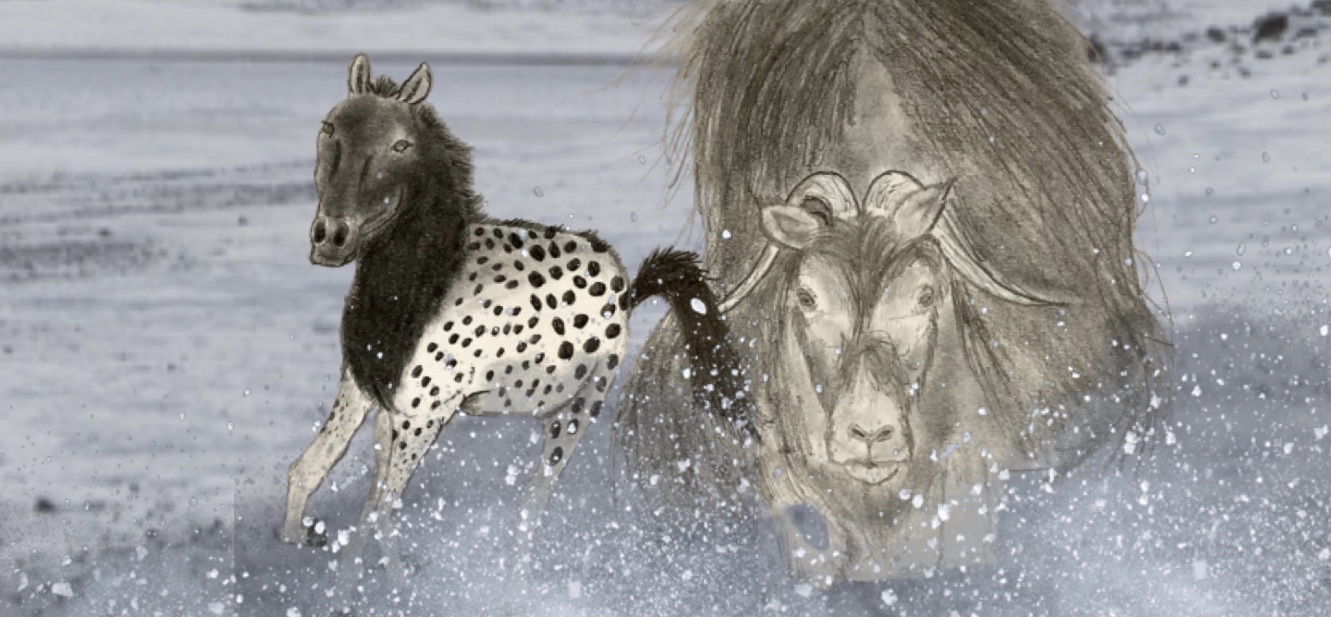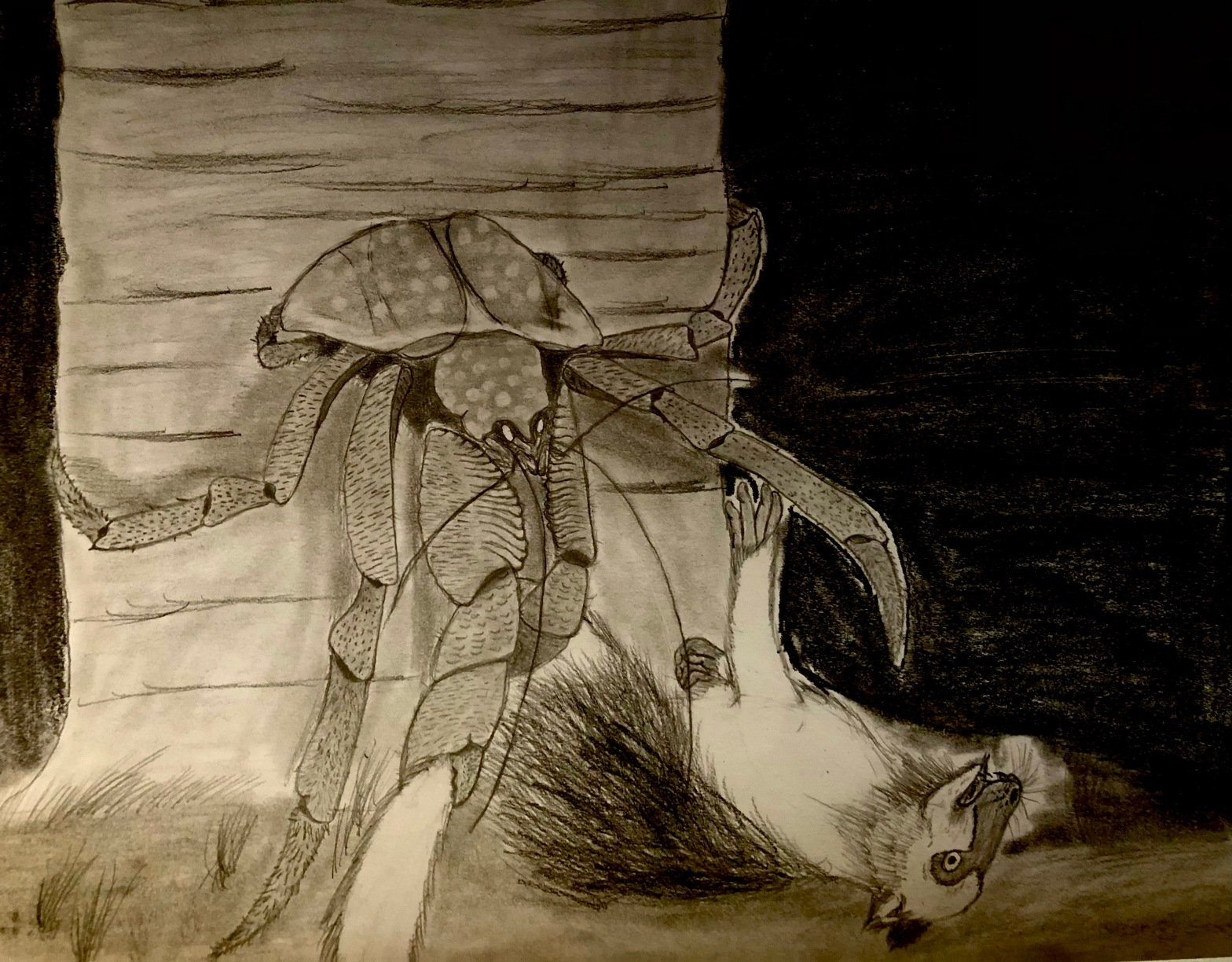As a certified Bovidae simp, I had to draw this hulking pile of foof someday. Meet Bos/Bison latifrons, a large bison species that inhabited large swaths of Western North America during the mid-late Pleistocene epoch (~30,000-20,000 years ago). Since newer taxonomic assessments point to bison being close relatives to yaks (Guo et al. 2006), IContinue reading “1/28/2022 – Bos/Bison latifrons”
Tag Archives: science
9/18/21 – the elephant bird’s last stand
While it seems New Zealand’s moa get all the press attention, Madagascar had its own avian giants. The fabled elephant birds were flightless, wingless ratite birds who tromped around Madagascar as early as the Oligocene epoch and may have held out until only ~120 CE (Hawkins & Goodman, 2003). While elephant birds never reached theContinue reading “9/18/21 – the elephant bird’s last stand”
9/5/2021 – on giant walruses and bone-crushing dogs
On the topic of unexpected roles in paleoart, let’s talk about walruses. These great, blubbery brutes (kidding…!) are noteworthy amongst sealkind for their distinguishable tusks, but walruses hide a….surprisingly dark secret that goes largely unnoticed in the public eye. Yep, the animal kingdom holds many surprises: herbivores can be jerks, apex predators spend most ofContinue reading “9/5/2021 – on giant walruses and bone-crushing dogs”
8/26/21 – Pelorovis PSA: the REAL(???) Syncerus antiquus, plus Balearic Islands and Nigerian dwarf goats
Oh, Syncerus antiquus, how you grip the mind! This large African buffalo, previously included in the dubious genus Pelorovis (“monstrous sheep”), is (in?)famous amongst paleontologists and paleoartists alike for its ludicrous headgear: two massive horns that stretched almost its entire body length and then some! While this post is partially a big self-pat-on-the-back (I’ve beenContinue reading “8/26/21 – Pelorovis PSA: the REAL(???) Syncerus antiquus, plus Balearic Islands and Nigerian dwarf goats”
8/20/21 – on herbivore aggression and predator-prey interactions
One major paleoart tropes as old as the art form itself is the frequent “casting” of certain types of animals into certain “roles”. Carnivores are always on the prowl or tearing some luckless prey item limb-from-limb, herbivores are either strewn dead at their attackers’ feet or cowering in the bushes, and omnivores are always….eating meat.Continue reading “8/20/21 – on herbivore aggression and predator-prey interactions”
7/24/21 – the “Jaws myth”: Otodus megalodon & other unfortunate sharks
Poor sharks just can’t get a break. Ever since the 70s summer hit Jaws came out, sharks have been seen by the general public as mauling, flesh-ripping, human-gobbling monsters. This “shark craze” carried on into our understanding of prehistoric sharks – most notably Otodus megalodon, perhaps the most famous of them all. Feared for itsContinue reading “7/24/21 – the “Jaws myth”: Otodus megalodon & other unfortunate sharks”
7/21/21 – Megalovis, yet another enigmatic Cenozoic bovid
Obscure paleofauna are rad! One particularly obscure one that’s been nagging me for some time now is the Plio-Pleistocene genus Megalovis, represented by the sole species M. latifrons. These big guys are only known from a single pair of fragmented horns – that’s…that’s it. So what’s to say about Megalovis? Well….not a whole lot, I’mContinue reading “7/21/21 – Megalovis, yet another enigmatic Cenozoic bovid”
7/6/21 – Pleistocene faunal interactions: even more thoughts for artists
A couple weeks ago, I discussed Pleistocene faunal interactions and how our perception of animal predation impacts them. Today is, more or less, the same – with some differences. As many will notice, I’ve strayed away from active predation in this scenario. Violence and predation are mainstays in paleontological illustration, and predator-vs-prey interactions – evenContinue reading “7/6/21 – Pleistocene faunal interactions: even more thoughts for artists”
6/26/21 – Megapiranha: fact vs. fiction
Perhaps among the better-known prehistoric “river monsters” (behind Xiphactinus audax and Otodus megalodon, of course) is probably Megapiranha. This “piranha”, holder of perhaps the most ludicrous Latin name in paleontological history, is surprisingly enigmatic – despite the amount of reconstructions that exist, we know almost nothing about these big South American characins. Very few ofContinue reading “6/26/21 – Megapiranha: fact vs. fiction”
6/11/21 – Pleistocene/Holocene faunal interactions: thoughts for artists
One of the mainstays of Cenozoic-era paleo artworks (especially those taking place in the Pleistocene) is featuring long-dead fauna preying on what species were lucky, fast, or delicious enough to escape extinction. It’s just seemingly a necessity: what artwork of the American cheetah is complete without some poor pronghorn fleeing for its life? Or whatContinue reading “6/11/21 – Pleistocene/Holocene faunal interactions: thoughts for artists”






